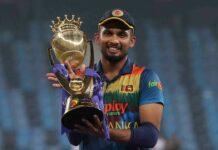As the top brass of the International Cricket Council assembled for a chief executives’ meeting on June 25 in Melbourne, little would have the five offspinners currently under the body’s scanner known that the legality of their bowling would be questioned.
In the meeting, it was decided that the current process for assessing and clearing suspect bowling actions needed to be reviewed. And in the following two months, Sachithra Senanayake, Saeed Ajmal, Prosper Utseya and Sohag Gazi were all pulled up for questionable actions, while Kane Williamson, the New Zealand allrounder, was suspended entirely from bowling till he underwent remedial work and satisfied assessors.
The ICC has since been commended for their clampdown on illegal actions, and rightly so. But some problems still remain. The players who were pulled up have all been sent to biomechanical centres for assessment. How much good will that do though? Wisden India spoke to I Shivram, a former international umpire who has officiated in nine One-Day Internationals, and he believes players are quite capable of bowling within the permissible limits in a non-match scenario, but could revert to their old action under pressure in a match.
To prevent that, Shivram said a change in ruling would work wonders. “Personally I feel, there should be nothing called degrees. Either it (bowling action) is clean, or not clean – there should be no two ways about it,” he said. “The law is very clear – once the bowling arm reaches the shoulder level, it should not be straightened. That is it, and that is all it should be.
“Once degrees come into the equation, it becomes very confusing. At testing centres, they will bowl 13 degrees, but in match situations that can exceed permissible limits. You never know. If a player goes into rehab, he knows there are no wickets to be taken or runs he might concede. So he can bowl properly, at even 10 degrees.”
Shivram pointed out that things work differently in the domestic circuit in India as compared to international cricket. While it’s all fairly straightforward in domestic cricket, the usage of degrees on the international circuit meant umpires have a difficult job calling out the wrongdoers. “The on-field umpires in domestic cricket can take action straightaway if they are not satisfied with a bowler’s action. They can call immediately,” he said. “If the legality of bowling action is not blatantly wrong but there are doubts, then they report. This is normally what happens in domestic matches.
“International cricket, they have their own way of working out, and they have these degrees, saying an allowance of 15 degrees is permissible. The thing is, it’s not possible for an umpire on the field to figure out how many degrees a bowler is extending his arm by. That’s why they report, and don’t generally call, when they have a doubt in international. They have the right to call, but since the degrees have come in, they report.”
There is seemingly a consensus that on-field umpires are best positioned to make a call on those bowling with illegal actions, but it isn’t always an easy task. Shivram admits that players wearing full sleeves makes it “difficult” to spot an illegal action, while there are many occasions when bowlers largely have error-free actions till they bowl a specific delivery.
“Sometimes it’s not quite clear. There are times that the extension may be visible, but sometimes it’s partial. Sometimes the bowler’s wrist-work makes it appear illegal even though it actually may not be,” explained Shivram. “Then there are times when only some deliveries have a problem, like if the bowler is trying a faster one or a shorter delivery. It can happen. In these cases, they may not be in a position to call because it is tough to, at those speeds. They report it to the board, who will refer it to the suspect action committee. There is then a review of the bowler’s action through videos, personal assessment and so on before they decide on the action to be taken and the remedial work to be done.”
By way of a solution, Shivram called for the empowerment of on-field umpires in international cricket and enforcing the law. He also advocated international cricket adopting what the BCCI has done in domestic cricket and placing the impetus on the on-field umpires to make that call.
“The board has already empowered umpires, as far as domestic cricket is concerned and in my opinion, international cricket should also do adopt something like this,” he said. “Otherwise, everything will go on as is, with degrees and all that. A slower delivery will be less than 15 degrees, but a faster one will be more. That’s how it is. The solution is to give more power to umpires on-field. If someone’s action is not okay, then call. Irrespective of who is playing, what team it is or which level the game is. Law is law.”






















